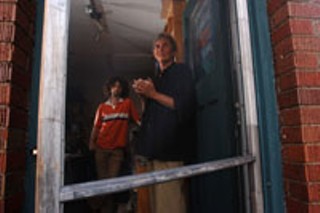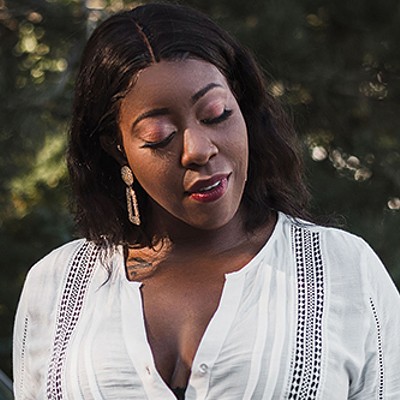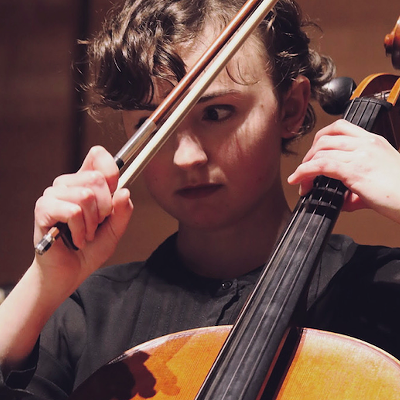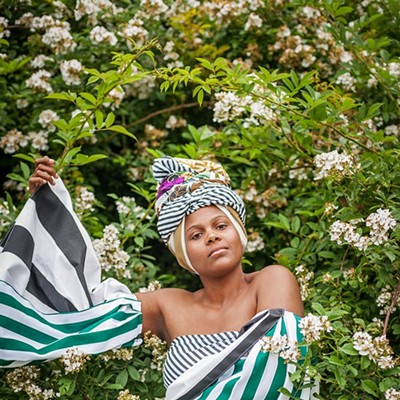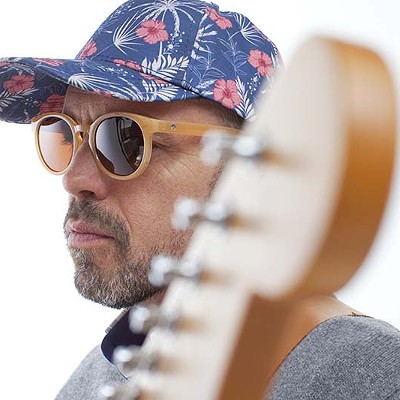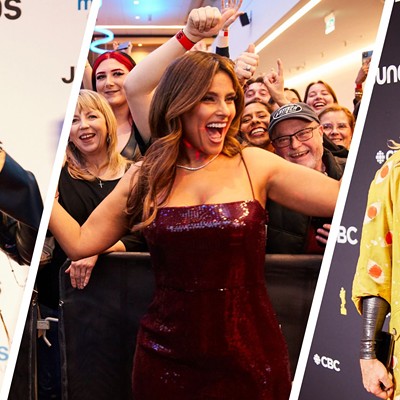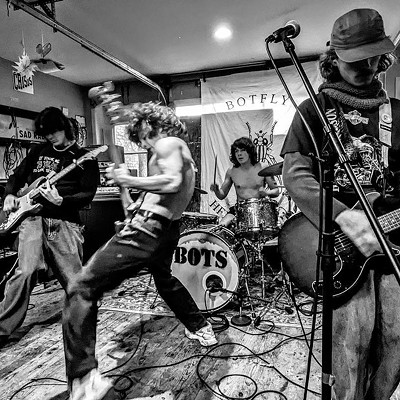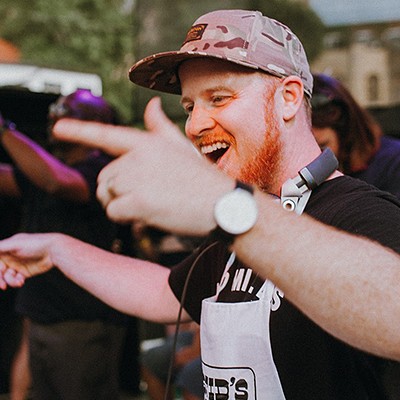“‘Why don’t you get Miles Davis?’” Susan Hunter, artistic director for the Atlantic Jazz Festival, laughs about one of the odder requests she’s received. “People look at the line-up and say, ‘I’ve never heard of anyone.’ Well, the truth is they’re either way too expensive or way too dead.”
The famous horn player put down his last note in 1991, but Hunter also hears plenty of suggestions for other (still breathing) musicians that should play Jazz Fest. She and festival producer Adam Fine are responsible for programming nine days worth of entertainment to satisfy all musical appetites, from educated, capital-J jazz musicians to neophyte festival-goers. Some come to listen, others to dance, some just to drink beer. It’s not an easy job, and it’s one that comes with its share of misunderstandings and criticisms, especially because musical taste is as subjective as breakfast cereal choice.
By the end of this year’s festival, there will already be inquiries from artists and managers for next year’s program. By October, the festival will have received hundreds of submissions from all over the world, in both paper and email forms. Unsolicited submissions or unknown artists usually don’t get past this point, as costs for bringing in new, untested acts can be cost prohibitive for both the performers and the festival. Ultimately, most of the acts booked are familiar to the programming team—“What we’ve seen or heard somewhere. We bring in music we like to hear ourselves,” says Fine. “And it has to be good,” adds Hunter.
Hunter and Fine attend two national block booking meetings, one for jazz festivals and another for folk. This is where they make contacts with other festival directors and bookers, learn about who’s touring and how much they cost. An umbrella organization, Jazz Festivals Canada, helps to connect 17 festivals across the country, and to advocate for national corporate sponsorship deals with companies like Lexxus and Second Cup. Many festivals are on what is referred to as “the circuit,” which means that they’re timed so that musicians can easily travel from Victoria to Vancouver to Edmonton to Toronto, Ottawa, and so on. It’s how many jazz and world musicians can afford to tour their music and why you often see overlaps in programming between festivals. Unfortunately, the big Canadian circuit stops in Montreal, currently the world’s biggest jazz festival, also what Hunter refers to as the “mecca” for artists.
This year, the Atlantic festival is two weeks out from Montreal, which means that touring artists such as Ani DiFranco or cooler-than-cool Brazilian samba-pop and The Life Aquatic Bowie crooner Seu Jorge would have to hang out for two weeks between shows, if they were to make a stop here. Financially and time-wise, it makes little sense for most touring artists.
It’s easy to say that Jazz Fest should be timed more closely with Montreal, but before you get your saxophone in a knot, according to Hunter and Fine, there are a number of variables at work. First, the artists actually have to want to come here. The major European festivals begin right after Montreal, so many musicians fly to Vienna, Copenhagen, Stockholm and other fests, travelling right past the east coast. Moving the festival up a week would mean audience competition with the Nova Scotia Tattoo. Plus, as Fine points out, Halifax suffers from the volatility of early summer weather—even a week can make a difference in temperature and rain clouds.
There’s a huge cost to bring in the mainstream headlining acts that bulk up the Montreal line-up, including Etta James, Paul Simon, Tony Bennett and Elvis Costello & the Imposters. Big shows need big venues, and both Hunter and Fine feel that the Metro Centre does not provide a “pleasurable, quality experience” for the type of performances they want to program. The Rebecca Cohn is a more suitable performance venue, but with just 1,040 seats compared to the Metro Centre’s 10,000, ticket prices would be extremely high to cover performance fees, venue and travel costs.
Hunter and Fine aren’t worried about
hiding under the shadow of the Montreal’s star-fest though. “It forced us to be different, and to look different, which is good because we couldn’t afford to keep up with all the people anyway,” explains Hunter. Instead, Halifax has built a reputation as a musicians’ music fest, where they can hang out and relax, teach workshops or perform with other musicians.
Many of those who do come to Halifax are funded by Canada Council of the Arts grants, one of the biggest financial supporters of aboriginal, classical, folk, jazz and world music—basically all genres that don’t get a lot, if any, commercial radio airplay. Collaboration and creation projects such as the June 22 finale at the Dunn Theatre, featuring 24 Nova Scotian artists, are also big on the Canada Council money train. Some of the international artists are funded through exchange programs.
“You do have to sell tickets at some point,” Hunter says candidly. The festival’s biggest obstacle is not necessarily who’s on the line-up, but the general perception that jazz is a highfalutin, finger-snapping, beret-wearing musical form. Without precious radio time, it’s difficult to promote artists whom very few people have heard (although keep in mind that the Jazz Fest’s parent organization Jazzeast brought in Diana Krall several times before her commercial success). The audience demographic for old-school jazz is getting smaller, while the definition of what jazz is—what Fine refers to as the spirit of the music—has widened to include fusions with folk, roots and blues. In fact, they’ve casually, and jokingly, discussed changing the name of the festival.
“The word jazz turns a lot of people off,” admits Hunter. “They think it’s going to not be for them, or high brow or not accessible or too weird, and that’s just so wrong. On that level it would be nice to just be doing a music festival.”
Of course, changing the name could potentially alienate the capital-J crowd. “It’s amazing how proprietary people feel about our line-up sometimes and how they don’t want to see the connections, or what that music might be,” she continues. “You take something like Seckou Keita,”—an Afro-Mandinka quartet—“if that was a guitar instead of a kora , everything would be jazz all of a sudden.”
Azam Ali is the photogenic singer of Niyaz, an electro-world trio that mixes dance music with mystical Persian and Indian poetry. Niyaz is currently on a demanding worldwide tour that will take its members across many time zones, dancing on jazz, folk, roots and blues festival stages, in front of many different audiences. Calling from her hotel room in Montreal a day before she’s scheduled to play there, Ali says that she finds jazz festival audiences to be especially open-minded. “There are probably a lot of people who have probably never heard of world music bands,” she says. “Maybe they’ll come to our show, or someone else’s show, and they never even thought they liked that kind of music because they associated it with one kind of thing. All of a sudden they have a good time and they like it. If it opens up anyone to new possibilities, that’s a wonderful thing.”
For saxophonist Chris Mitchell, who has 20 years of festival touring behind him and has won the prestigious Prix de Jazz award from the Montreal festival, the issue is getting concert-goers to try something new. “To me, a festival should be about promoting new music,” he says. “The listeners aren’t always as adventurous as the musicians may be; it takes an exceptional person to take a chance.”
He applauds Jazz Fest for their risk taking —his own festival performance, With Strings Attached, is a unique, one-off collaboration with saxophonists Mike Murley and Don Palmer, plus a string quartet. He says, “This festival does take that chance, and they’ve taken it on the chin a couple of times, but they’ve really tried to push the boundaries. Instead of turning it into a pop mentality—not that there’s anything wrong with that—but that’s already taken care of. We have that. That’s an easy sell.”
That must be music to Fine and Hunter’s ears as they anxiously count down the days until the big show. “You’d really like to find a way to say just come and try it,” says Hunter. If you’re still not convinced, she suggests trying the daily free shows in the Spring Garden and Queen street tent. “It’s not threatening at all.”
For Jazz Fest schedule and ticket information, see page 21.

